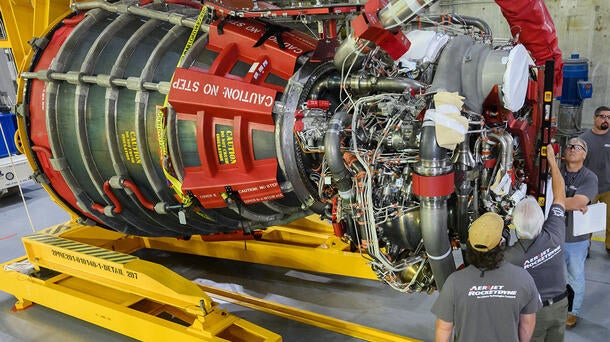The Pursuit for Ultimate Driving Power: Examining the Peak of Engine Performance and Technological Innovations in the Automotive Sector
In the realm of automobile design, the quest of optimum driving power has actually been a ruthless mission that has unfolded with the development of engine layout and the integration of advanced technologies. From the meticulous craftsmanship of combustion engines to the rapid advancements in electrical propulsion systems, the automobile sector stands at the cusp of a brand-new era identified by unmatched performance capabilities.
Evolution of Engine Design

Additionally, the assimilation of turbocharging and supercharging modern technologies has changed engine design by enhancing power without substantially raising engine size. These forced induction systems compress the consumption air, permitting more fuel to be ignited, thereby generating better power output from a smaller engine. This innovation has actually been particularly vital in boosting the performance of smaller sized displacement engines while maintaining fuel effectiveness criteria.

Performance-Enhancing Fuel Technologies
The application of advanced fuel modern technologies has considerably added to improving engine efficiency in modern-day cars. Biofuels, derived from sustainable resources like algae, corn, or sugarcane, offer boosted and reduced discharges engine performance. Additionally, gas additives and cleaning agents are being created to clean engine elements, enhance burning, and reduce rubbing, therefore improving total vehicle performance.
Developments in Electric Propulsion
Substantial strides in electrical propulsion innovation have actually revolutionized the automobile market, paving the means for a brand-new period of sustainable and efficient transport. Electric vehicles (EVs) are acquiring appeal as a result of their ecological benefits and innovations in battery technology, allowing longer driving varieties and shorter charging times. Makers are spending greatly in study and growth to improve the efficiency of electrical propulsion systems, concentrating on raising power outcome, improving energy effectiveness, and lowering total weight.
One remarkable innovation in electrical propulsion is the advancement of advanced electrical motors that provide higher torque and power thickness, leading to improved velocity and general driving efficiency. Furthermore, regenerative braking systems have actually been fine-tuned to catch and store energy throughout deceleration, further increasing the efficiency of EVs.
Moreover, the integration of smart modern technologies, such as expert system and anticipating analytics, is enhancing the management of electrical propulsion systems, making certain ideal efficiency under various driving problems. These developments in electrical propulsion are reshaping the auto landscape, driving the market in the direction of a much more lasting and electrified future.
Influence of Computational Liquid Dynamics
With advancements in electrical propulsion pressing the boundaries of automobile technology, the assimilation of Computational Fluid Dynamics is playing a pivotal function in maximizing aerodynamic efficiency and enhancing general efficiency in automobile layout. Computational Fluid Dynamics (CFD) involves making use of computer system simulations to evaluate the flow of air around a lorry, enabling engineers to forecast exactly how style adjustments will impact aerodynamics without the requirement for pricey physical models. By accurately modeling air flow patterns, CFD permits for the improvement of vehicle forms to decrease drag, boost air conditioning, and enhance stability.
One trick benefit of utilizing CFD in vehicle design is the capability to iterate quickly, discovering various style variants to determine the most aerodynamically efficient solutions. This repetitive process leads to automobiles that are not just sleeker and much more visually appealing yet additionally more fuel-efficient and eco-friendly. Furthermore, CFD enables designers to enhance air movement around elements such as radiators, engine bays, and wheel wells, adding to enhanced performance and general driving experience. In conclusion, the assimilation of Computational click for info Liquid Dynamics stands for a significant advance in the quest for utmost driving power and performance in the auto sector.
Future Trends in Engine Innovation
In the dynamic landscape of auto design, sophisticated innovations are forming the future trajectory of engine technology. The future of engine layout is noted by a strong emphasis on performance, effectiveness, and sustainability. Suppliers are progressively concentrating on creating engines that not only provide high power outputs but additionally focus on ecological obligation by reducing discharges and enhancing gas efficiency.
One prominent trend in engine innovation is the increase of electrification. Hybrid and electrical powertrains are getting traction as practical alternatives to pop over here conventional combustion engines. These technologies provide the capacity for significant reductions in carbon discharges and raised energy performance, straightening with global efforts to combat environment adjustment.
Furthermore, improvements in products science and manufacturing methods are allowing the manufacturing of lighter and much more resilient engine elements. This shift in the direction of lightweight products such as carbon fiber and aluminum alloys adds to improved performance and gas economic situation.
Final Thought
Finally, the quest of supreme driving power in the automotive industry remains to drive advancements in engine layout, fuel innovations, electric propulsion, and computational fluid dynamics. The development of these innovations is shaping the future of engine innovation, leading the method for extra effective and effective cars (engines for africa). As the market proceeds to push the borders of what is feasible, we can expect to see a lot more revolutionary developments in the mission for peak performance
One of the essential landmarks in engine layout development is the change from standard carbureted engines to modern-day fuel-injected systems. By precisely metering the fuel shipment to each cyndrical tube, fuel-injected engines optimize burning, resulting in much better efficiency and reduced environmental impact.
Furthermore, the assimilation of turbocharging and turbo charging technologies has reinvented engine layout by increasing power without significantly boosting engine dimension (engines for africa).The implementation of sophisticated fuel technologies has actually significantly contributed to enhancing engine performance in modern-day cars. Additionally, fuel additives hop over to these guys and cleaning agents are being developed to tidy engine parts, enhance combustion, and decrease friction, therefore increasing general car efficiency